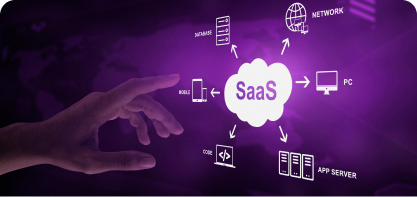Cloud Cost Optimization
Optimizing Cloud Cost
Intelligently

Cloud Cost Optimization Services
Achieve maximum ROI on cloud usage through cost predictability, efficient balancing of spend, and resource management. Gsoft Cloud brings comprehensive cloud cost optimization services allowing your businesses to implement FinOps processes seamlessly across cloud environments. Our cloud cost optimization solutions consist of FinOps expertise, cloud discounts, and reliable tools to help you to set an ideal cost optimization strategy.

Our Approach to Cloud Cost Management
A unique cloud cost management process that can effectively plan, monitor, and right-size cloud expenses across organizational units, cloud accounts, and applications. The process can help you identify, track, and monitor cloud costs, plan cloud usage, and right-size cloud resources and optimize them for your specific needs.
Plan
Monitor
Optimize
Operate
Pre-infra Provisioning
What?
Budgeting aligned with forecasted consumption
Key Metric definition in consultation with stakeholders
How?
Select the right instance and storage types based on workloads
Utilize reserved and spot instances based on projected utilization
Choose resource regions wisely factoring into cost variations and licensing spends
Define inclusive cost metrics across services, capacity, utilization, availability, and performance
Key Benefits of Cloud Cost Optimization
Explore how Gsoft cloud cost optimization services can help your organization maximize the value of your cloud investments and achieve business goals.

Enhanced Visibility on Cloud Spends
We help you track and measure your cloud cost independently in a well-architected OpEx environment allowing you to spin up/down the resources as desired optimally.

Reduce Cost Inefficiencies
Our cost optimization solutions convert your expenses to values by offering multitude of pricing options such as pricing per unit, segment, process, product helping you eliminating the inefficiencies associated with the conventional fixed cloud pricing models.

Improved Transparency
Tracing resource usage, expenses, and profit from each unit of your business ensures transparency in business decision. As we track and monitor your cloud expenditures, you will be better aware how your cloud space is utilized.

Deliver Cost-performance Balance
We help you achieve a continuous balancing of cost and performance by eliminating underutilized resources, reserving capacity for better discounts, and right-sizing computing services to scale.

Promotes Effective Decision Making
Get insights from your past spend behaviour at every level using our advanced Analytics Dashboards. This allows you to make effective spend decisions and bring plans to action quickly.

Automated Cost Management
By leveraging automated cost optimization techniques, Gsoft helps you simplify tasks like provisioning and de-provisioning resources and achieve significant time and cost savings.
Case Studies
Check out the highlights from our client’s success stories and gain insights into the strategies and techniques we used
to optimize their cloud costs and improve their ROI.



CASE STUDY
How Forerun Systems Achieved Cost and Performance Optimization Through Cloud Migration.
Migrating and modernizing IT infrastructure not only reduces expenses but also amplifies efficiency and agility....
Read more


CASE STUDY
The Success Strategy of a Top Retail Telecom Company
Cloud migration promises improved competitiveness and cost savings, yet many organizations find their expenses....
Read more


BEST PRACTICES
Gsoft's Best Practices for Cloud Cost Optimization
Our implementation of best practices for cost optimization is aimed at enabling you to achieve the highest....
Read more


BLOG POST
Best Strategies for Efficient Cloud Cost Optimization
A common concern that organizations face in their cloud migration journey is how to manage their cloud spending effectively...
Read more


BLOG POST
7 Cloud Cost Optimization Metrics You Should Know
Cloud cost optimization is an integral part of the cloud transition journey of any modern organization. This helps to analyze cloud...
Read more


BLOG POST
Architecture Framework for Your Cloud Cost Optimization Strategies
Enterprises are increasingly reaping rich dividends migrating to the cloud enabling innovation at scale, faster feature delivery, and quick response to evolving...
Read moreFAQs of Cloud Cost Optimization
Frequently Asked Questions
Q:
What is cloud optimization and what are its benefits?
a. Cloud optimization is the process of selecting and assigning the right cloud resources to a workload or application. The core benefits businesses can achieve using cloud cost optimization techniques are:
- Identifies unused or underutilized cloud resources and eliminates them to reduce costs pertaining to their usage.
- Improve the performance and efficiency of applications by ensuring the applications are running on the right hardware and software stack.
- Helps to gain better visibility into cloud spending through tracking costs and identifying trends.
- Helps take better business decision-making by having a better understanding of cloud costs.
Q:
How can cloud cost optimization service help us identify cost-saving opportunities?
a. By leveraging cloud cost optimization services, you can better understand cost-saving opportunities while maintaining performance and operational effectiveness. It includes:
- Cost analysis and monitoring to track and monitor resource utilization, identify idle or underutilized resources, and highlight areas where optimization can lead to cost savings.
- Resource utilization metrics and recommendations for rightsizing resources according to the actual workload requirements.
- Reserved Instance optimization involves assessing your usage patterns and providing guidance on utilizing Reserved Instances (RIs) effectively.
- Spot Instance Utilization to spare cloud capacity at heavily discounted prices.
- Automated scheduling and scaling to optimize resource allocation by automatically scaling resources based on workload demand or scheduling non-essential resources to be powered down during off-peak hours.
- Cost allocation and tagging to track and allocate costs accurately to different teams, projects, or departments.
- Cost visualization dashboards and reports that visualize cost data, trends, and anomalies.
Q:
What is the difference between cloud cost management and FinOps?
a. Cloud cost management focuses on monitoring, analyzing, and optimizing cloud expenses, while FinOps (Financial Operations) is a broader discipline that encompasses the intersection of cloud technology and financial management, including budgeting, forecasting, governance, and cross-functional collaboration to drive cost optimization in cloud environments.
Q:
What are the key factors that contribute to high cloud costs?
- Overprovisioning of resources
- Lack of resource optimization
- Suboptimal instance selection
- Data transfer and bandwidth costs
- Lack of visibility and monitoring
- Unused or idle resources
- Lack of cost allocation and accountability
- Pricing model selection
- Inefficient data storage management
- Lack of cloud cost optimization strategies
Q:
Do you offer a cost assessment or analysis of our existing cloud infrastructure?
a. Yes. Our cost assessment services are designed to help you optimize your cloud usage and identify potential cost-saving opportunities. Some few ways they may assist you are:
- Online Pricing Calculator to estimate the expenses associated with running your infrastructure on their platform.
- Cost management tools that help to monitor and analyze your cloud spending.
- Reserved instances and savings plan to commit to using specific resources over a longer period and receive significant discounts on your cloud usage costs.
- Cost optimization recommendations based on your infrastructure usage patterns.
Q:
How can I measure the effectiveness of my cost optimization initiatives?
a. Measuring the effectiveness of your cost optimization initiatives is crucial to determine their impact and make informed decisions. Here are some of the methods you can implement toward this end.
- Calculate the actual cost savings achieved because of your cost optimization efforts.
- Compare the current expenses with the baseline or previous periods to quantify the reduction in costs.
- Identify relevant Key Performance Indicators (KPIs) that align with your cost optimization goals.
- Evaluate the Return on Investment (ROI) ROI of your cost optimization projects by comparing the cost savings generated to the investment made.
- Analyze the variances between the actual costs and the budgeted costs.
- Assess the impact of cost optimization on time-related metrics such as measuring cycle time, production time, or delivery time.
Q:
What are the different types of cloud costs?
a. The costs associated with your cloud infrastructure can be classified into two main categories, namely variable costs, and fixed costs. The variable costs may change depending on your usages, such as the cost of the computing instances or storage. On the other hand, fixed costs include the cost of a cloud subscription or the cost of data transfer which will not change overtime.
Need Help? Contact Our Sales
Don't let high cloud costs eat away your profits! We'll work with you to develop a customized cost optimization plan that meets your specific needs and budget. Contact our experts today If you want to learn more about our cloud cost optimization strategies.